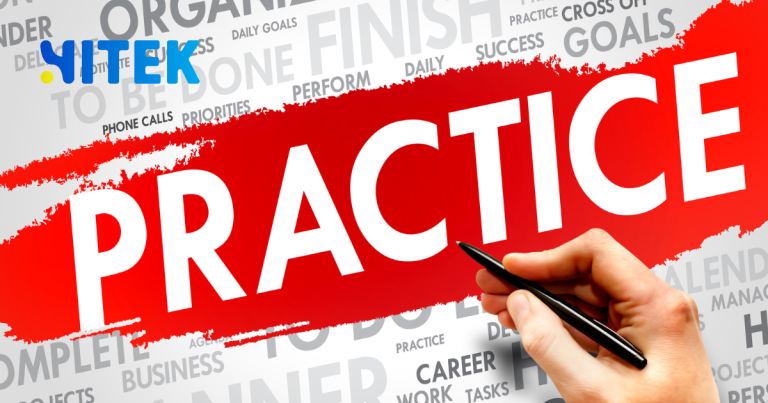In the world of software development, agility is everything. Teams must adapt quickly, deliver value consistently, and collaborate effectively to stay ahead. Enter Scrum, a framework that has become synonymous with Agile methodologies. But what exactly is Scrum, and why is it such a game-changer for software development teams in Australia? Let’s break it down.
Contents
ToggleWhat Is Scrum?
Scrum is a lightweight, iterative framework designed to help teams deliver high-quality software in short, manageable cycles called Sprints. It’s not a rigid set of rules but a flexible approach that encourages collaboration, transparency, and continuous improvement.
Initially developed for software development, Scrum has since been adopted across industries worldwide, from finance to healthcare. In Australia, where the tech industry is booming, Scrum has become a go-to methodology for teams looking to streamline their workflows and deliver results faster.
The Core Principles of Scrum
At its heart, Scrum is built on three pillars:
- Transparency: Every aspect of the process is visible to all team members and stakeholders.
- Inspection: Teams regularly review progress to identify areas for improvement.
- Adaptation: Based on feedback, teams adjust their approach to ensure better outcomes.
These principles create a culture of trust and accountability essential for successful Agile development.
Key Roles in Scrum
Scrum teams are small, cross-functional groups typically composed of three key roles:
- Product Owner: The visionary who defines the product’s goals and prioritizes the work to be done.
- Scrum Master: The facilitator who ensures the team adheres to Scrum practices and removes obstacles.
- Development Team: The group of professionals who design, build, and test the product.
In Australia, where remote work is increasingly common, these roles are often distributed across locations, making clear communication and collaboration even more critical.
The Scrum Process: How It Works
Scrum operates in fixed-length iterations called Sprints, usually lasting two to four weeks. Here’s a breakdown of the process:
- Sprint Planning: The team selects a set of tasks from the Product Backlog (a prioritized list of work) to complete during the Sprint.
- Daily Stand-ups: Short, daily meetings where team members share progress, plans, and challenges.
- Sprint Review: At the end of the Sprint, the team demonstrates the completed work to stakeholders.
- Sprint Retrospective: The team reflects on the Sprint and identifies ways to improve.
This cyclical process ensures continuous delivery and improvement, making it ideal for fast-paced environments like Australia’s tech sector.
Why Scrum Works for Australian Teams
Australia’s tech industry is known for its innovation and adaptability, making Scrum a natural fit. Here’s why:
- Flexibility: Scrum’s iterative approach allows teams to pivot quickly in response to changing market demands.
- Collaboration: By fostering open communication, Scrum helps distributed teams stay aligned, even across time zones.
- Focus on Value: Scrum prioritizes delivering tangible results, which is crucial for startups and enterprises.
For example, companies like Atlassian, headquartered in Sydney, have promoted Agile practices globally. Their tools, such as Jira, are widely used by Scrum teams to manage workflows and track progress.
Scrum vs. Traditional Project Management
| Aspect | Scrum | Traditional Project Management |
|---|---|---|
| Approach | Iterative and incremental | Linear and sequential |
| Flexibility | High adaptability to change | Limited flexibility once the plan is set |
| Team Structure | Cross-functional and self-organizing | Hierarchical and role-specific |
| Delivery | Frequent, small deliverables | One final deliverable at the end |
| Stakeholder Involvement | Continuous collaboration | Limited to specific milestones |
As the table shows, Scrum’s emphasis on flexibility and collaboration sets it apart from traditional methods, making it a better fit for dynamic industries like software development.
Getting Started with Scrum in Australia
If you’re considering adopting Scrum, here are a few tips to get started:
- Invest in Training: Ensure your team understands Scrum principles and practices. Organizations like Scrum Australia offer courses and certifications.
- Choose the Right Tools: Platforms like Jira, Trello, or Monday.com can help manage your Scrum workflows.
- Start Small: Begin with a pilot project to test the framework and refine your approach.
- Foster a Collaborative Culture: Encourage open communication and continuous learning within your team.
Common Challenges and How to Overcome Them
While Scrum offers many benefits, it’s not without its challenges. Some common issues include:
- Resistance to Change: Transitioning to Scrum can be daunting for teams that use traditional methods. Address this by providing adequate training and support.
- Poorly Defined Roles: Confusion about the Product Owner, Scrum Master, and Development Team roles can hinder progress. Clearly define responsibilities from the outset.
- Overcommitment: Teams may take on too much work during Sprint Planning. Use historical data to set realistic goals.
The Future of Scrum in Australia
As Australia’s tech industry grows, Scrum will likely play an even more significant role in shaping how teams work. With its focus on collaboration, adaptability, and delivering value, Scrum is well-suited to meet the demands of an increasingly competitive market.
Whether you’re a startup in Melbourne or an enterprise in Sydney, adopting Scrum could be the key to unlocking your team’s full potential.
Ready to Embrace Scrum?
Scrum isn’t just a methodology; it’s a mindset. By embracing its principles, Australian teams can deliver better software faster and with greater satisfaction. If you’re ready to take the leap, explore resources like Scrum.org or connect with local Agile communities.
What’s your experience with Scrum? Have you seen it transform your team’s workflow? Share your thoughts in the comments below or discuss how Scrum can work for you.
By understanding and implementing Scrum, Australian software development teams can stay agile, innovative, and ahead of the curve. So, why wait? Start your Scrum journey today.









